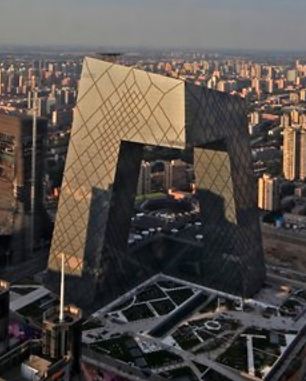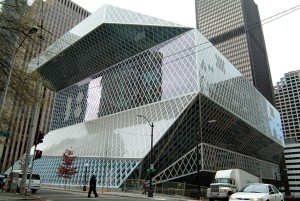By NICOLAI OUROUSSOFF Published: July 11, 2011 NY Times, Excerpted
BEIJING — Aside from the new World Trade Center, it’s hard to think of a more contentious architectural project in the last few years than the CCTV building, the headquarters of China Central Television here.
After Rem Koolhaas, the project’s architect, unveiled the design in 2003 he was pilloried by Western journalists for glorifying a propaganda organ of the Chinese government. Several years later a fire at the site nearly burned down a neighboring building, also designed by Mr. Koolhaas, landing the director of the project and 19 others in prison for negligence and significantly delaying construction.
And then there’s something about the building’s appearance that seems to unsettle people. Just when things got back on track after the fire, a Chinese critic published an article saying that the building’s contorted form, which frames an enormous void at its center, was modeled on a pornographic image of a naked woman on her hands and knees. The piece ignited a storm of negative press, forcing Mr. Koolhaas to issue a denial.
Yet for all that, the CCTV headquarters may be the greatest work of architecture built in this century. Mr. Koolhaas has always been interested in making buildings that expose the conflicting energies at work in society, and the CCTV building is the ultimate expression of that aim, beginning with the slippery symbolism of its exterior. At moments monumental and combative, at others strangely elusive, almost retiring, it is one of the most beguiling and powerful works I’ve seen in a lifetime of looking at architecture. read more

